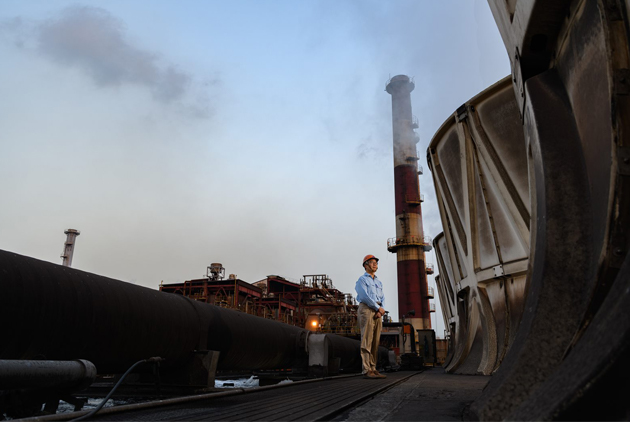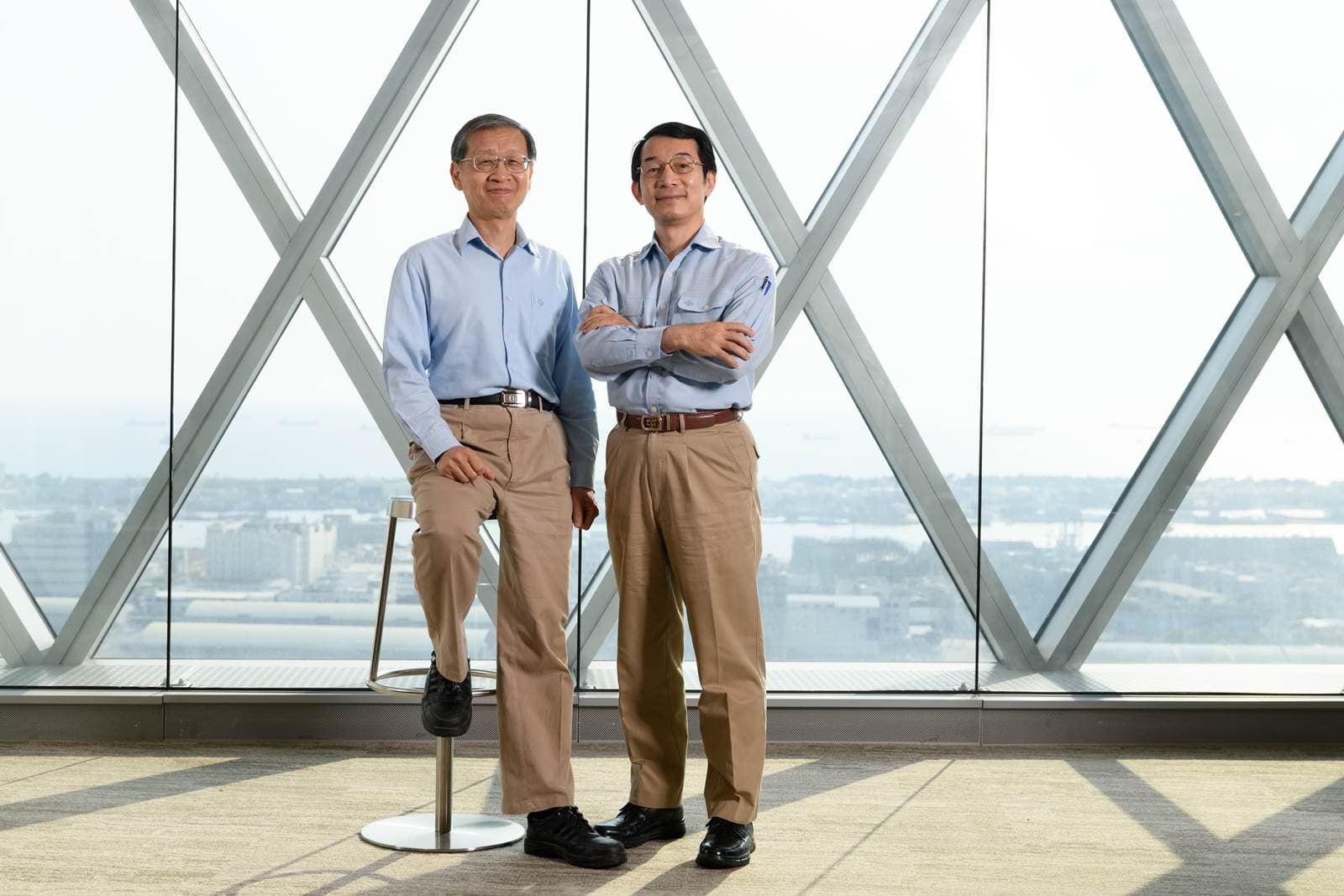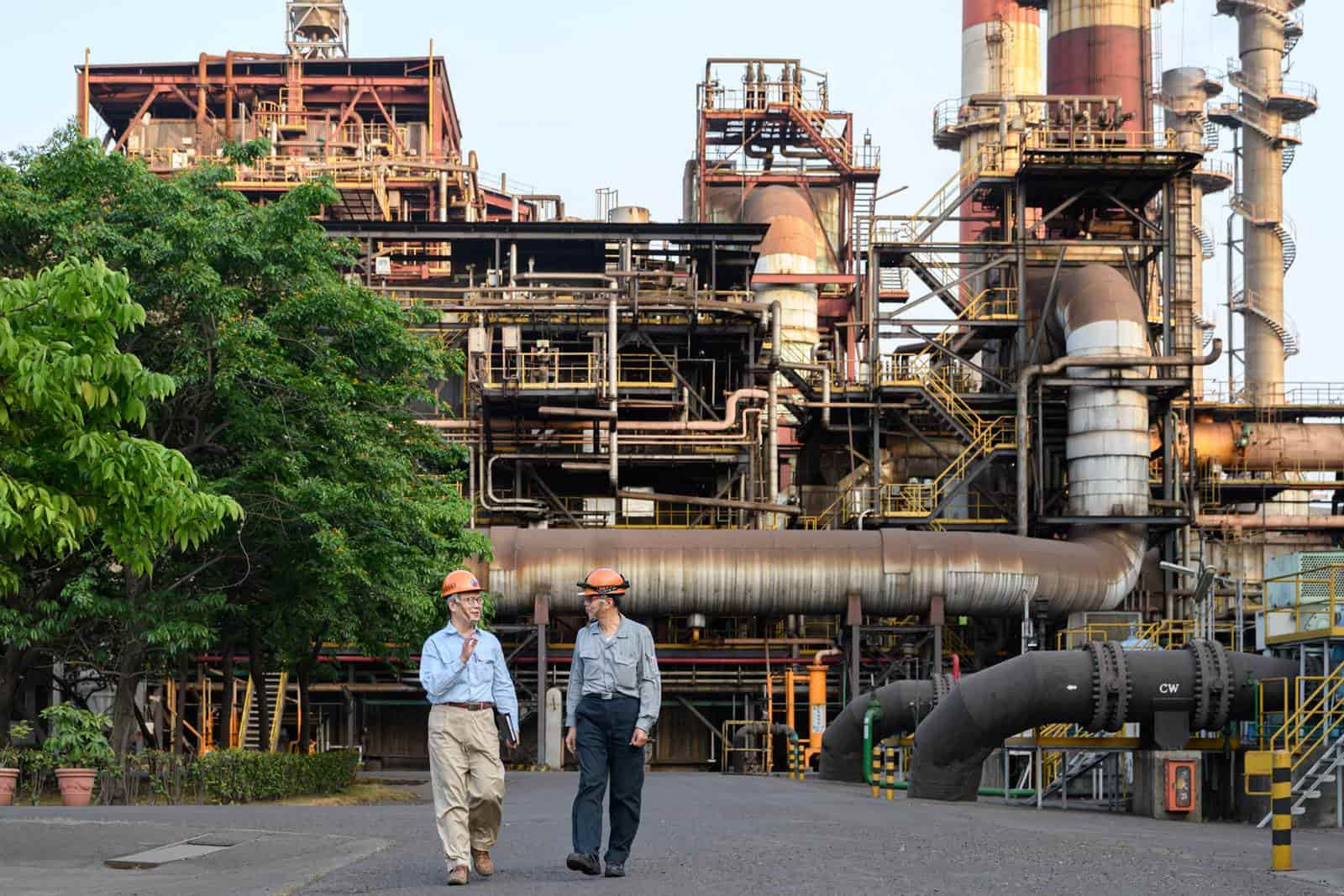Are high steel prices on the horizon? China Steel reveals secret to decarbonization

Source:Pei-Yin Hsieh
China Steel Corporation releases 14% of Taiwan’s total industrial carbon emissions into the atmosphere. If the steelmaker wants to achieve a net zero carbon emission target by 2050, the time-honored steelmaking process must undergo revolutionary technical changes such as hydrogen-powered processes and repurposing carbon dioxide for utilization in the petrochemical industry.
Views
Are high steel prices on the horizon? China Steel reveals secret to decarbonization
By Kuo-chen LuCommonWealth Magazine
Taiwan’s largest steelmaker, China Steel Corporation (CSC), and its sister company Dragon Steel Co. Ltd. take rank three and four respectively in Taiwan’s top ten largest emitters of carbon dioxide. Faced with a net-zero carbon emissions target for 2050, the two steelmakers cannot afford to sit idle. Instead, they are working on adopting technologies that can make carbon-intensive conventional steelmaking carbon-neutral.
With the international community and Taiwan pledging to reach net-zero carbon emissions by 2050, China Steel Chairman Wong Chao-tung is aware that the industry cannot sit on the sidelines in the face of this challenge. Although China Steel is not selling much of its production directly to the European Union (EU), about 70 percent of steel materials that are sold to downstream manufacturers are exported abroad. Given that the EU is considering the introduction of a carbon tax on certain imports from 2023, this would badly affect steel and steel product exports. Therefore, the steelmaker is weighing different technologies and approaches to make the steelmaking process more carbon neutral, says Wong.
Two events have played key roles in the China Steel scenario: First, the recent return of the United States to the Paris Agreement on climate change under the administration of U.S. President Joe Biden, and second, a meeting of Japanese Prime Minister Yoshihide Suga with Toyota Motor Corporation President Akio Toyoda, and successively with Nippon Steel Corporation Chairman Kosei Shindo, at the prime minister’s official residence in Tokyo on February 14 of this year, where the zero-carbon target figured prominently.
Wong says these two events sparked China Steel to launch a strategy to achieve the zero-carbon target. He points out that the two Japanese giants, both leaders in their respective industries, originally had only a carbon-reduction strategy. But after the meeting with Suga, they committed to net-zero carbon dioxide emissions by 2050.
Since Nippon Steel counts among China Steel’s toughest competitors and Toyota represents the needs of the biggest customers in the automobile industry chain, China Steel cannot ignore their moves. One of their approaches toward achieving zero carbon is developing “green” steel by replacing fossil fuels such as coal in steel production with hydrogen from renewable energy sources.
China Steel has launched a research and development team on hydrogen-powered steelmaking, including experts from Taiwan’s Industrial Technology Research Institute (ITRI), National Cheng Kung University, and National Sun Yat-sen University. The team has also visited the Australian Office Taipei to express China Steel’s interest in importing hot-briquetted iron (HBI) from Australia.
What exactly is hydrogen-powered steelmaking and why does hot-briquetted iron help reduce carbon dioxide emissions? As China Steel President Wang Shyi-chin explains, in the conventional steelmaking process, as it has been practiced for more than 200 years, a furnace is fed with a mixture of coal and iron ore that contains oxidized iron. At high temperatures, the coal reacts with the iron ore, reducing the iron oxide to metallic iron and oxygen. The iron is then refined further. This process also generates large amounts of carbon dioxide, which is why steelmakers count among the biggest sources of CO2 emissions.
Moving toward replacing coal with hydrogen
If hydrogen is used to generate heat in a furnace, then the iron ore reduction yields water and metallic iron but does not generate greenhouse gases. While this sounds compelling, it is easier said than done. Nippon Steel has announced it will pour 500 billion Japanese yen into the development of hydrogen-powered steel production and invest five trillion yen in plant construction. For a steelmaker like China Steel, these are astronomically high figures.
But there is another approach: Australia, which has rich coal and iron ore deposits, is also aware that conventional steelmaking is disadvantaged by its huge carbon footprint. With each coal export, Australia is also exporting carbon emissions. Therefore, the country is investing in the research and development of hydrogen production from renewable energy sources.
Abundantly available iron ore is also refined into low-carbon hot-briquetted iron for export. Consequently, China Steel is actively building collaborations with Australian suppliers to import hot-briquetted iron for its production plants.
While China Steel is pursuing both roads to greener steel, securing sufficient electricity from renewables and building a hydrogen storage infrastructure presents a formidable challenge. Wang says that if China Steel were to transition its entire production to green, hydrogen-powered steelmaking, it would need around one million tons of hydrogen per year. To produce these amounts, 14GW of electricity from renewable energy sources would be required. China Steel would not be able to secure that much green electricity even if it bought the entire output of all offshore wind parks in Taiwan. This means that more renewable energy sources need to be developed.
 (Source: Pei-Yin Hsieh)
(Source: Pei-Yin Hsieh)
Green hydrogen has become a trend, and using it to replace fossil fuels is no longer a far-fetched proposition. Taiwan Semiconductor Manufacturing Company (TSMC), the world’s largest chip foundry, is also using green hydrogen in its processes. Green hydrogen is an important element in the international net-zero carbon strategy, and Wang believes that Taiwan cannot remain on the sidelines. “The European Union has gotten prepared early on. In 2023, their green hydrogen output will reach one million tons. In 2025 this will increase to 10 million tons, and by 2030 they will have unlimited supply. The EU is planning to become a global leader in green electricity and green hydrogen. Taiwan must try hard to catch up,” says Wang.
Steel and petrochemicals joining hands: Capturing CO2 to make petrochemicals
Before hydrogen-powered steelmaking becomes a reality in Taiwan, China Steel will have to develop carbon capture technology and circular economy initiatives, and carbon dioxide from steelmaking will have to be captured for utilization in the petrochemical industry.
This is already happening. At China Steel, carbon dioxide generated during steelmaking is captured and delivered to Taiwan’s Chang Chun Group, which uses it to produce chemicals for the semiconductor industry. The collaboration creates a win-win situation, with the steelmaker reducing its carbon dioxide emissions and the petrochemical company reducing its reliance on crude oil.
 (Source: Pei-Yin Hsieh)
(Source: Pei-Yin Hsieh)
But Wang concedes that the current scale of carbon dioxide capture and utilization needs to be expanded. He hopes that one day all the chemicals used by TSMC will be made utilizing carbon dioxide captured in China Steel plants.
Wong points out that China Steel had already pledged in 2016 to use water recycled from wastewater. Although Taiwan currently faces extreme water shortages due to an exceptional drought, China Steel plants can operate as usual. This is owed to the company’s foresight and deployment in advance a few years ago. Similarly, the company must plan ahead even if hydrogen-powered steelmaking and co-production between the steel and petrochemicals industries for carbon dioxide capture and utilization still seem somewhat far-fetched.
High steel prices on the horizon
However, given that conventional steelmaking technology generates huge amounts of carbon emissions and 2050 has been set as a net-zero emission target, revolutionary technical changes are called for.
“This means that an era of globally high steel prices is lying ahead,” predicts Wong. In the future, it won’t be possible to just build a new steel plant, as one likes. Without carbon-reduction technology, it won’t be possible to produce steel, so steel could become a rare strategic good.
Have you read?
♦ A carbon neutral future: Can Taiwan get there?
♦ Bill Gates: "Avoiding a climate disaster is not easy, but not impossible"
Translated by Susanne Ganz
Edited by TC Lin
Uploaded by Penny Chiang






